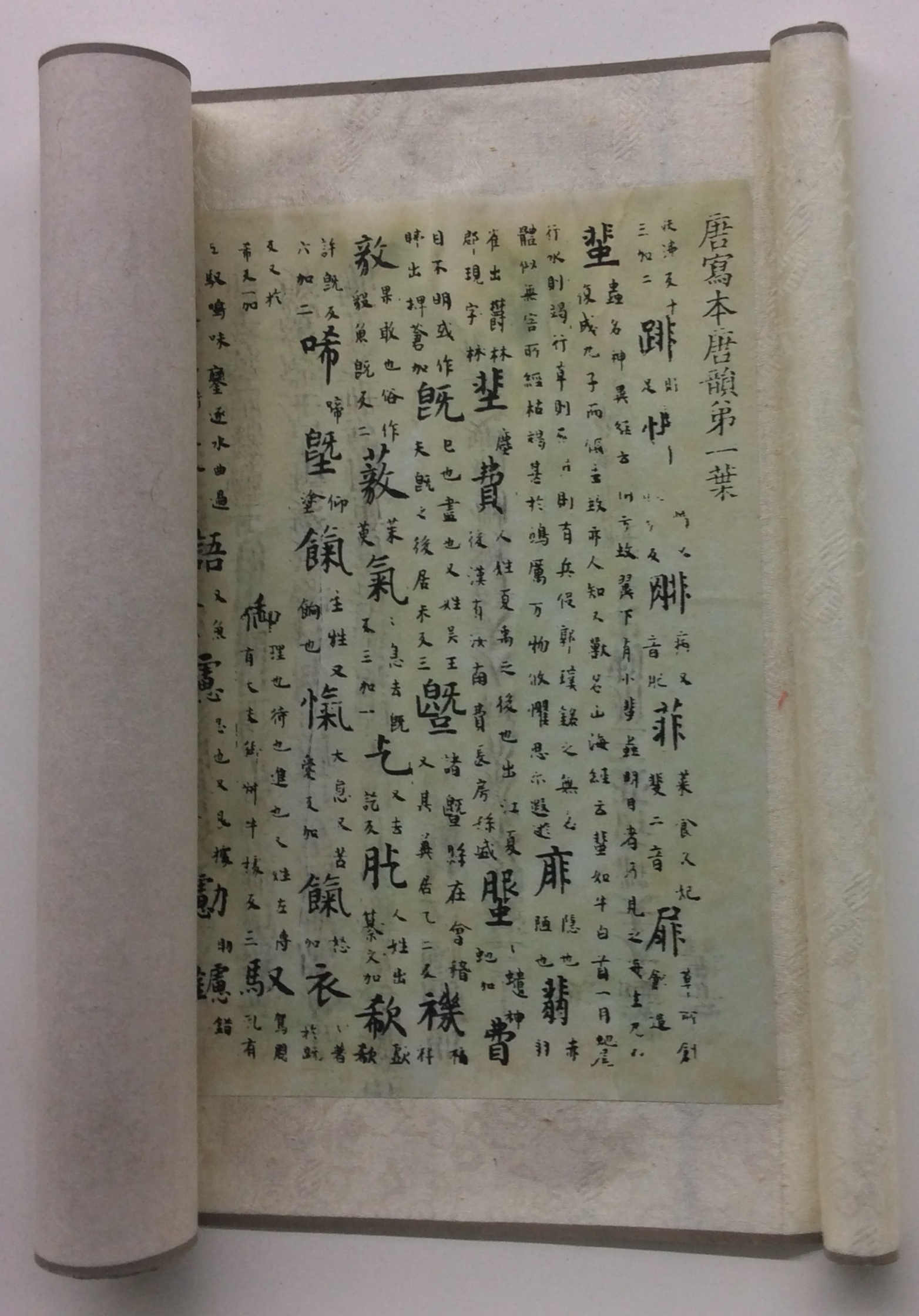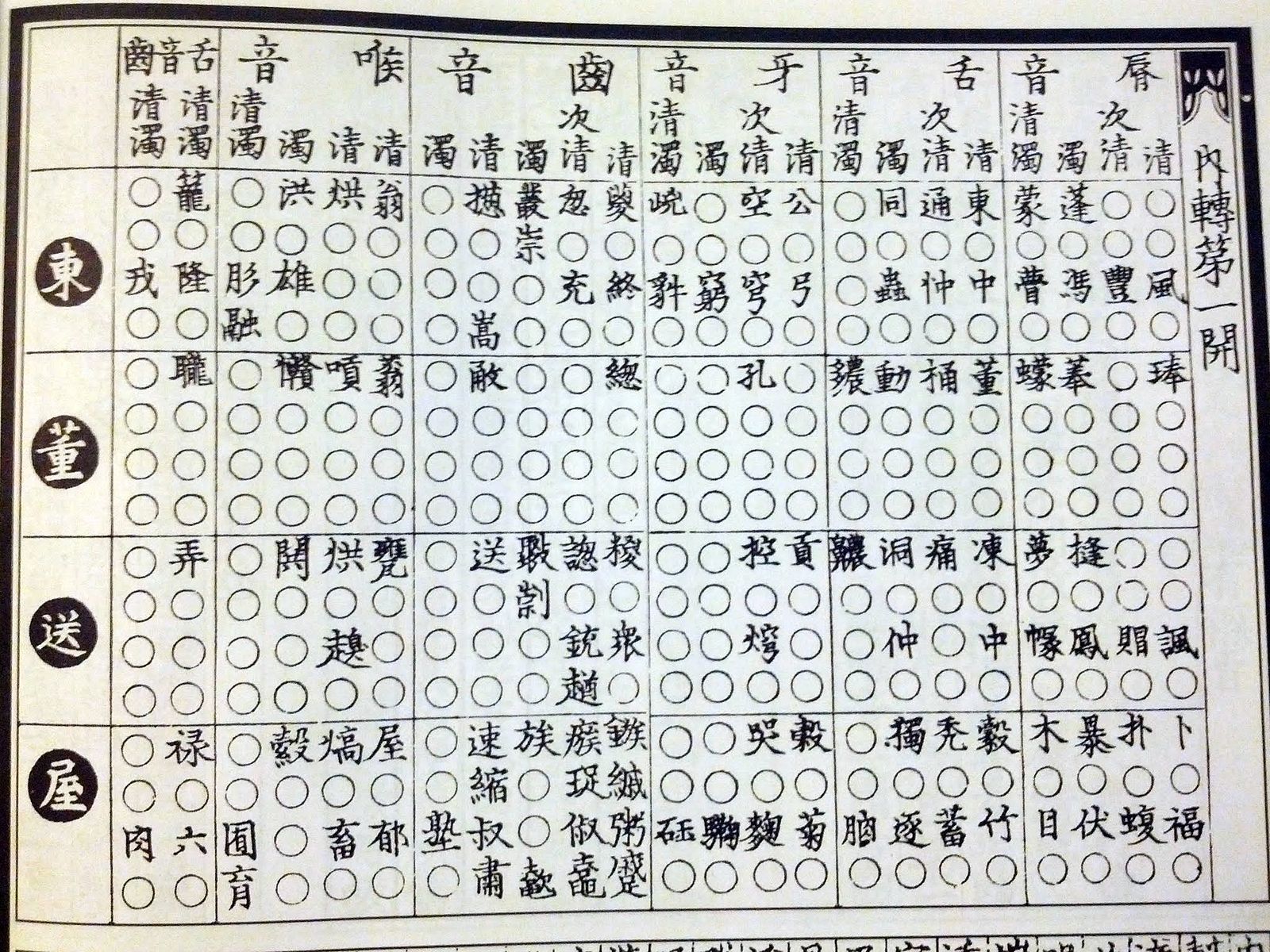Most of us know this famous quote from William Shakespeare: “To be or not to be: that is the question.” But what about “Béon oþþe ne béon, þæt is þæt fræġn.”? This is how it would sound approximately in Old English. English language experts have found different ways to figure out how classical texts sound. They examine historical documents and records, especially those related to observations made by people who were attending theater shows or engaged in verbal conversations at the time. In addition, they analyze the spellings used back then and study old rhymes and puns, which often don’t rhyme in Modern English.
Like these experts, Chinese scholars have worked for centuries to figure out how ancient Chinese poetry and literature should sound. They’ve developed different systems and methods to rebuild the sounds of earlier Chinese languages. The study of speech sound is called 音韻學/音韵学 (yīn yùn xué) in Chinese, literally, pronunciation and rhyme study.
Today, we’re going to take a closer look at how the 音韻學/音韵学 was conducted throughout Chinese history to help us have a better understanding of this old language. But why does this matter? These changes in sounds aren’t just for academics. They’re essential for understanding a language spoken by more than 1.3 billion people today. They help us make sense of classical Chinese literature and poetry and even help shape how we learn the language today.
The contributions of Chen Li to the reconstruction of Middle Chinese
Our journey takes us to the mid-19th century, during which Chinese scholar Chen Li (1810 – 1882) made significant contributions to the understanding and analysis of Middle Chinese pronunciation, building on a scholarly tradition that had been ongoing for centuries.
Central to his analysis was the use of the Fanqie (反切; lit. reverse cutting) system, a traditional method for indicating the pronunciation of Chinese characters. This method, which was already in use more than 1200 years before Chen Li’s time, employs one character to indicate the initial sound of a target character and another to indicate its final (the rest of the syllable, including the final and the tone).
Let’s take the character 一 (yī), meaning “one,” for example. If we were to explain its pronunciation using Fanqie, we might use these two characters:
于 (yú) – This character has the same initial sound “y-” as 一 (yī).
悉 (xī) – This character has the same final “ī” as 一 (yī).
So, in Fanqie, the sound of 一 (yī) can be represented by the two characters 于悉 (yú xī). It’s important to note that the two characters used in the Fanqie system do not need to have meanings related to the character they’re representing. They are chosen solely based on their sounds. This system was incredibly important in the past when audio recordings were not available. It played a crucial role in documenting and understanding the phonology of the Chinese language over time.

Tangyun (唐韻/唐韵), a rhyme dictionary, exhibits in the Chinese Dictionary Museum
Image credit: Underbar dk, Tangyun – Chinese Dictionary Museum, CC BY-SA 4.0
An earlier scholar, Lu Fayan (陸法言), made extensive use of the Fanqie system when he compiled the Qieyun (切韻/切韵) dictionary, the oldest surviving Chinese rhyme dictionary, dating back to 601 during the Sui dynasty (581 – 618). Unlike modern Chinese dictionaries, which arrange characters based on radicals (部首), rhyme dictionaries organize characters according to their pronunciation. Interestingly, the Fanqie system was instrumental in documenting the tones of the Chinese language, although it did not introduce them. As for the origin of tones in Chinese, it’s a complex issue. Some believe tones developed naturally over time within the Chinese language itself, while others see possible influences from other languages. However, there’s still much debate among scholars about this topic.
Nevertheless, the Fanqie approach and its documentation of tones laid a solid foundation for future studies in historical Chinese phonology (漢語音韻學/汉语音韵学).
From Fanqie to rhyme tables: a more systematic approach
After the Fanqie system, a more systematic method of presenting Chinese phonology emerged: the rhyme tables (韻圖/韵图). The earliest known rhyme table, Yunjing (韻鏡/韵镜; lit: Mirror of Rhymes), was believed to have been published during the Five Dynasties period (907-960), a time of political upheaval and short-lived kingdoms in Chinese history.

The first table of Yunjing, an example of a rhyme table
Image credit: White whirlwind, Yunjing first table, CC BY-SA 3.0
A typical rhyme table is structured like a two-dimensional grid. One axis showcases “initials” – sounds that start a syllable, akin to the consonants in many languages. These initials are further broken down based on where the sound is produced in the mouth, whether it’s the lips (唇), front teeth (齒/齿), back teeth (牙), tongue (舌), or throat (喉), among other places.
The other axis of the rhyme table features the “finals” – sounds comprising the rest of the syllable. While they could be likened to the vowels in languages like English, finals are more complex and often include more than just a simple vowel sound. They take into account elements like the medial (an additional sound that can occur between the initial and the main vowel), the main vowel itself, and the ending sound, which could be either another vowel or a consonant. Tones of the characters are also woven into this intricate system.
By cross-referencing the initials (聲母/声母) and finals (韻母/韵母) on the rhyme tables, scholars can deduce the likely pronunciation of each Chinese character as it was spoken in Middle Chinese. This data, consolidated into categories called “rhyme classes,” paints a vivid soundscape of the past, offering unparalleled insights into the historical evolution of the Chinese language.
Bernhard Karlgren: a Swedish linguist’s contributions
Swedish linguist Bernhard Karlgren (1889 – 1978), known by his Chinese name 高本漢/高本汉 (gāo běn hàn), made significant contributions to the field of Chinese phonology. Karlgren was a pioneer in using phonetic transcription to represent the sounds of Chinese characters.
He applied the comparative method, comparing the pronunciations of around 30 Chinese dialects – including Beijing dialect, Cantonese, and Hakka – and even incorporated elements from Japanese Kanji and Vietnamese Chu Nom scripts. With the aid of ancient Chinese rhyme dictionaries, he embarked on the ambitious project of reconstructing the phonology of Old and Middle Chinese. His reconstructions, while later refined, laid a new foundation in the field of Chinese historical phonology and complemented the work previously done with the Qieyun dictionaries.
From Ancient to Middle Chinese: a shift in perspective
As scholars continued to build upon the work of Chen Li and Karlgren, it became apparent that the reconstructed language wasn’t a single Ancient Chinese. Instead, the long history of the Chinese language which can be roughly divided into three historical stages:
- Old Chinese (上古漢語/上古汉语): Also known as Archaic Chinese, Old Chinese is the earliest stage of the language, spanning from the late Shang Dynasty (1250-1046 BC) through to the end of the Western Han Dynasty (202 BC – 9 AD). The understanding of this stage is primarily derived from written records such as bronze inscriptions and oracle bone scripts, as well as from the rhymes in the poetry of the period.
- Middle Chinese (中古漢語/中古汉语): This stage refers to the Chinese language as it was spoken during the Sui, Tang, and Song dynasties (581–1279). Middle Chinese is primarily represented by the phonology of the Qieyun dictionary. This form of Chinese later diversified into the numerous varieties of Chinese that exist today. Moreover, it forms the phonological basis for many Sinoxenic pronunciations of Chinese characters in Japanese, Korean, and Vietnamese.
- Early Chinese (近古漢語/近古汉语): Often referred to as “Old Mandarin,” this stage began during the Yuan Dynasty (1271 – 1368) and lasted until the New Culture Movement in the 1920s. Despite the name, it differs in certain aspects from Modern Mandarin.
Each stage is characterized by unique sound changes and phonological features. The knowledge of these stages has been primarily reconstructed from ancient rhyming texts, historical linguistic comparisons, and other historical and archaeological sources.
Learning Chinese today: the modern touch of the Chineasy app
Building on the scholarly foundations laid by Chinese phonologists over centuries, modern tools like the Chineasy app now make learning Chinese more accessible than ever.
Chineasy simplifies the complexities of Chinese language learning. It offers an interactive platform where you can easily learn Chinese characters, their pronunciation, and grammar rules. By breaking down Chinese into understandable parts, it turns a challenging language into an achievable goal for anyone, regardless of age or background.
Thanks to the likes of Lu Fayan, Chen Li and Bernhard Karlgren, who dedicated their lives to understanding Chinese phonology, we now have the knowledge and tools to bring Chinese learning to your fingertips with apps like Chineasy. It’s a fascinating journey of language learning that’s just a tap away.
Final thoughts
The exploration of ancient Chinese phonology is a remarkable journey through time, carved out by the relentless curiosity and dedication of scholars across centuries. It’s a narrative that stretches from the creation of the Qieyun dictionaries and rhyme tables to the trailblazing work of linguists from diverse backgrounds. These ongoing efforts have illuminated our understanding of the Chinese language’s evolution, reminding us of the dynamism and richness of its phonological tapestry. Through their contributions, the echoes of the past continue to resonate, enhancing our appreciation and understanding of one of the world’s oldest and most influential languages.
Dig Deeper: further viewing
- What “Ancient” Chinese Sounded Like – and how we know – NativLang
- The Sound of the Early Middle Chinese language – ILoveLanguages!
- How Chinese used to sound – TCAS: Trinity Centre for Asian Studies



